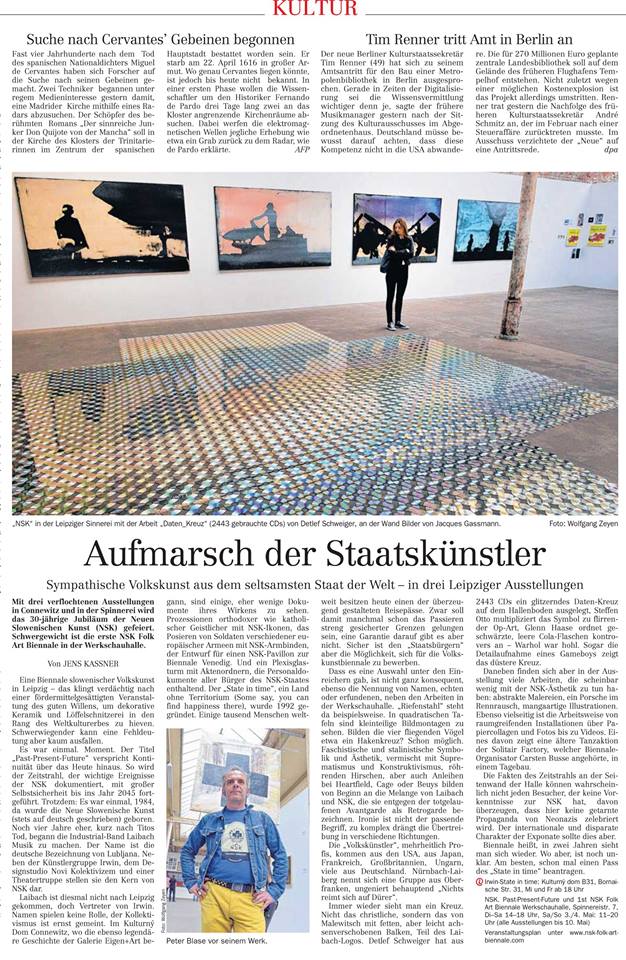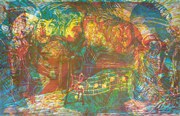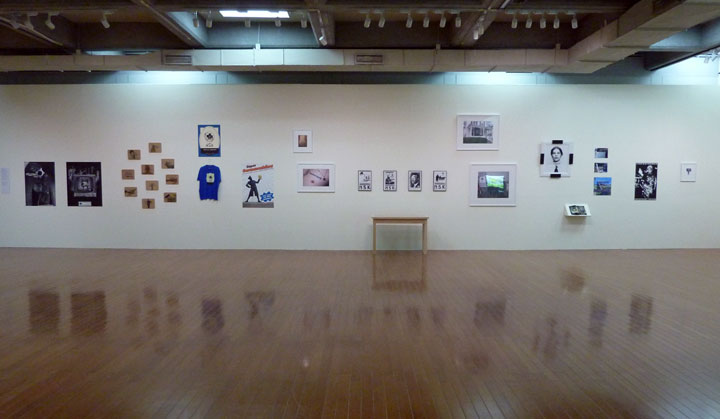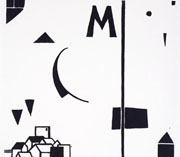Presse
Aus Leipziger Volkszeitung:
1st NSK Volk Art Biennale Leipzig 2014

__________
„32. Leipziger Grafikbörse“ – Ausstellung im Landtag präsentiert zeitgenössische sächsische Druckgrafiken
Pressemitteilung 35/2013 vom 26.03.2013

Landtagsvizepräsident Horst Wehner und Reinhard Rössler, Vorstandsvorsitzender Leipziger Grafikbörse e. V., eröffnen am 3. April 2013 die Ausstellung „32. Leipziger Grafikbörse – Ein Forum für Druckgrafik“ im Sächsischen Landtag.
Im vierzigsten Jahr nach ihrer Gründung präsentiert die Leipziger Grafikbörse in ihrer 32. Kollektion originalgrafische Arbeiten aus den Jahren 2011 und 2012. Kunsthistoriker Rainer Behrends, Vorstandsmitglied Leipziger Grafikbörse e. V., wird in die Ausstellung einführen.
Die Vernissage findet am Mittwoch, dem 3. April 2013 um 18:00 Uhr im Bürgerfoyer des Sächsischen Landtags statt. Die Vertreter der Medien sind herzlich eingeladen.
Die „Leipziger Grafikbörse“ stand erstmals nach einem Jahrzehnt nicht unter einem bestimmten thematischen Aspekt. An der 32. Auflage beteiligten sich 99 Künstlerinnen und Künstler, die in ihren Arbeiten zahlreiche verschiedene Drucktechniken einsetzten. So zeigt die Exposition Werke, die in den klassischen Drucktechniken wie Hockdruck mit Holz- oder Linolschnitt oder Tiefdruck mit Ätzradierung entstanden sind sowie Kaltnadelarbeiten und Kupferstiche. Zu sehen gibt es aber auch Grafiken, bei denen seltener genutzte Methoden wie die Fotoradierung oder die Arbeit im Lichtdruckverfahren angewandt wurden. Damit präsentiert die Schau einmal mehr die Vielfalt des grafischen Schaffens der überwiegend aus Sachsen stammenden Künstler.
Die Ausstellung ist bis zum 8. Mai 2013 im Bürgerfoyer des Sächsischen Landtags zu sehen. Geöffnet ist sie Montag bis Freitag von 10 bis 18 Uhr. Der Eintritt ist frei.
Hintergrund „Leipziger Grafikbörse“
Die „Leipziger Grafikbörse“ wurde 1972 als Arbeitsgemeinschaft innerhalb des Verbandes bildender Künstler Leipzig als erste jury- und damit zensurfreie Künstlervereinigung der ehemaligen DDR gegründet. Von Beginn an vermittelte sie einen Überblick über aktuelle Strömungen und Handschriften traditioneller grafischer Druckkunst. Ein Schwerpunkt liegt auf der Förderung junger Grafiker, denen der Verein die Möglichkeit bietet, gemeinsam mit überregional anerkannten Künstlern auszustellen. Die Ausstellungen der „Leipziger Grafikbörse“ gehören zu den bedeutendsten nichtkommerziellen Veranstaltungen auf dem Gebiet der aktuellen Druckgrafik in Sachsen.
Die „Leipziger Grafikbörse“ wurde 1972 als Arbeitsgemeinschaft innerhalb des Verbandes bildender Künstler Leipzig als erste jury- und damit zensurfreie Künstlervereinigung der ehemaligen DDR gegründet. Von Beginn an vermittelte sie einen Überblick über aktuelle Strömungen und Handschriften traditioneller grafischer Druckkunst. Ein Schwerpunkt liegt auf der Förderung junger Grafiker, denen der Verein die Möglichkeit bietet, gemeinsam mit überregional anerkannten Künstlern auszustellen. Die Ausstellungen der „Leipziger Grafikbörse“ gehören zu den bedeutendsten nichtkommerziellen Veranstaltungen auf dem Gebiet der aktuellen Druckgrafik in Sachsen.
__________
Pressetext zur Ausstellung :
NSK FOLK ART 3.11. – 3.12. 2011 Galerija Skuc, Ljubljana
PETER BLASE, CHRISTIAN CHROBOK, DANAJA, DAPE, DAVID K, DREW GORDON, META GRGUREVIČ & JURE NOVAK & ANDREJ LEHRMAN, HARIS HARARIS, CHARLES KRAFFT, M.S., CHRISTIAN MATZKE, PUBLIC MOVEMENT, CHRISTAIN NNORUGA, AVI PITCHON & EMILY McMEHEN, BJORN QUIRING, ASTRID THINGPLATZ, VALNOIR, DAVID WRATNY
Exhibited works are from IRWIN in NSKSTATE.COM collection NSK Folk Art.
You are also most kindly invited to attend the presentation of the book State of Emergence- A Documentary of the First NSK Citizens' Congress, which will take place before the exhibition opening, at 19.00. The book will be presented by the editor, Alexei Monroe, and Haris Hararis, initiator of the NSKSTATE.COM web portal.
For several years, the programme of Škuc Gallery has always sought to refer to the history of the venue, particularly by taking into account the gallery’s past and its historical role, which then serve as a platform for artists whose work was presented in solo and group exhibitions ten years ago or more. In any case, this does not mean an idealisation of history and its phenomena or the re-creation of existing ideas, but refers above all to a contemplation of the development of individual artistic practices and phenomena; therefore, the projects presented in Škuc feature current works. In the 1980s, Škuc Gallery opened its doors to new phenomena in the visual arts, including the Neue Slowenische Kunst (NSK) movement, which was established in 1984. Cooperation, a constant flow of ideas between the founding members – the groups which comprised NSK (Laibach, IRWIN and Scipion Nasice Sisters Theatre) – created a movement which from its inception broke through the limitations of the visual arts and had a powerful effect on the wider cultural sphere, while influencing other aspects of society. Connections between groups within NSK resulted in projects with a complex media structure which openly flirted with the phenomenon of the 'Gesamtkunstwerk', while revealing a completely new understanding of art and contemporary society. NSK projects provided a platform that brought together theatre, music, painting, literature, philosophy, design and performance. In 1992, NSK experienced some sort of transformation - the next level of development, as it were - with the establishment of the NSK State in Time, which was mainly a response to the political shifts and radical changes taking place in Yugoslavia and Eastern Europe after the fall of the Berlin Wall in 1989. The establishment of the NSK State provided a symbolic starting point for the realisation of NSK Folk Art, which reveals for the first time the different interests of citizens and their views of the NSK. The research project seeks to completely distance itself from the NSK ‘authorities’ and the founders of the NSK State, thereby presenting the phenomenon and development of folk art in the state as genuinely as possible.
In addition to the universality of the idea of the NSK State in Time, the key factor for the development of folk art was the Internet, as it enabled the idea of a state without territory, which exists only in time, to spread very quickly. In 2001, Haris Hararis set up the website NSKSTATE.COM, which became a meeting place for different initiatives of NSK citizens, confirming that citizens were developing ways of self-organisation and the idea of a state completely independently from its founders. NSK projects referred to the complex media structure from the very beginning, and the same is true of the initiatives and projects of citizens of the NSK State. Via the NSKSTATE.COM website and also independently, citizens (in particular) have created an astounding collection of surprising projects which make some reference to the NSK phenomenon. The idea of connecting art and the state or art and ideology is also very evident. The conceptual space and scope of iconography of the NSK have enabled individual citizens to express their views, and, above all, the possibilities of the NSK State in Time both in terms of form and content. This is also one of the objectives of the NSK Folk Art exhibition, which is a kind of collection of thoughts of individual citizens about what the State should be. Considering the entire scope of folk art of the NSK State in Time, the selection presented in Škuc Gallery is rather limited, as it had to be adapted to the venue, while being as multifaceted as possible. The selection presents diverse forms of individual art practices, which shows the complex media structure of the projects; above all, it focuses on individual decisions that citizens (in particular) have made within the context of the NSK State and expressed through the medium of art. Some works directly comment on geo-political relationships and current social problems in the area of their work. Some commentaries are very intimate or direct political statements, as the artists are personally involved with the issue at hand and use art to define and separate themselves from the majority. Somewhat different, but no less significant, is the explicit presentation of an individual’s identity, which can still be subject to prejudice, particularly if the form does not conform to established patterns of social mythology. The NSK State has become a type of refuge for those who think alike and differently, who are creating a new space of opportunities on both collective and individual levels. Within this framework, connecting common interests and references is primary. For some, this is a space of super-identification which principally refers to the founders of NSK and its projects; meanwhile, independent ideas of individuals who see the NSK State as a platform for bringing together thoughts on philosophy, politics, religion, traumas, art and personal poetics and views have emerged.
The NSK Folk Art exhibition in Škuc Gallery seeks to encapsulate some of the more recognisable ideas and citizens views of the NSK State in Time. However, like any folk art, NSK folk art is not a fixed canon, but continues to develop, taking on new forms and thereby different roles – both in the form of continuous rational processes and intuitive action, both of which are marked by the underlying urge to create/make statements. In addition to an innovative formal approach, the exhibition NSK Folk Art also shows that context has a very important role in a work of art, and directly shows how contemporary the visual works are. The wide field established by the context always leaves the door open to contradictions which emerge when works and ideas are juxtaposed. Therefore, the exhibition NSK Folk Art is as affirmative as it ambiguous. Within the NSK State in Time, every point of view has its opposite, which raises doubt. Perhaps the best epigraph for the exhibition is the statement by Tristan Tzara: “Dada doubts everything. Dada is an armadillo. Everything is Dada, too. Beware of Dada. Anti-dadaism is a disease: self-kleptomania, man’s normal condition, is Dada. But the real dadas are against Dada.”
Curator: Tevž Logar
__________
Call for Participation
First Collection of Volk Art
Have you produced your own artworks, objects or designs inspired by the work of NSK and its groups?
IRWIN and nskstate.com are gathering material for a first exhibition of work produced by NSK citizens and followers. Works selected will be shown online and photographic and video material will be shown at the First NSK Citizens Congress in October 2010.
IRWIN and nskstate.com are gathering material for a first exhibition of work produced by NSK citizens and followers. Works selected will be shown online and photographic and video material will be shown at the First NSK Citizens Congress in October 2010.

__________
IRWIN and NSKSTATE.COM, NSK Folk Art, 1992 - ongoing
mixed media
Together with the Slovenian art movement Neue Slowenische Kunst (NSK), IRWIN founded the NSK State in Time, an entity resembling independent nation-states not officially recognized as such. As an ongoing project, it represents a utopian state which has "no physical territory; its only territory is the dimension of Time" (nskstate.com). For the Taipei Biennial 2008, IRWIN set up an NSK passport office and video interviews with new Taipei-based citizens, together with documentation of previous events in London, Sarajevo, Berlin and Vienna. For TB10, IRWIN, in collaboration with nskstate.com, has assembled a collection of artworks produced independently by NSK citizens. These examples of "folk art" reflect back on the political and social implications of the NSK project. Presented artists: Peter Blase, Christian Chrobok, Danaja, dape, Haris Hararis/nskstate.com, David K, Charles Krafft, Goran Lišnjić, Lili Anamarija No, Christain Nnoruga, NSK.IS, Avi Pitchon, Alex Ross & Chris Wade, Armin Zerbe.TB08 Revisited Series
__________
CHEMNITZ
100 Sächsische Grafiken - Tiefdrucke
Am 8.6. um 19.30 Uhr eröffnet die Neue Sächsische Galerie eine Ausstellung, die die Ergebnisse des alle zwei Jahre stattfindenden sachsenweiten Wettbewerbes unter professionellen bildenden Künstlerinnen und Künstlern vorstellt. Gesucht waren die neuesten Arbeiten auf dem Gebiet der Radierung, mit besonderem Blick auf den experimentellen Umgang mit der historischen Technik. Aus knapp 400 eingereichten wählte die Jury 100 Arbeiten für die Ausstellung aus und zeichnete neun Künstler/innen für ihre eingereichten Werke aus. Die Präsentation kann vom 8.6 bis 5.9. besucht werden.
AF
AF
__________
Sächsische Grafiken im Sächsischen Landtag
Pressemitteilung 13/2010 vom 18.02.2010

Am 25. Februar 2010 eröffnen Landtagspräsident Dr. Matthias Rößler und Alexander Stoll von der Neuen Sächsischen Galerie die Ausstellung "100 Sächsische Grafiken - Blätter im Letterndickicht" im Bürgerfoyer. Die Ausstellung zeigt Werke sächsischer Künstler, die sich mit der Verbindung von Schrift und Bild auseinandersetzen.
Sächsische Grafikarbeiten, die sich mit der Verbindung von Schrift im Bild auseinandersetzen, sind das Thema der Ausstellung „100 Sächsische Grafiken – Blätter im Letterndickicht“, die ab dem 26. Februar 2010 im Landtag gezeigt wird.
Vernissage am Donnerstag, 25. Februar 2010, im Bürgerfoyer des Landtags
Landtagspräsident Dr. Matthias Rößler und die Neue Sächsische Galerie laden am Donnerstag, dem 25. Februar 2010 um 18 Uhr zur Eröffnung der Ausstellung in das Bürgerfoyer des Sächsischen Landtags ein. An die Begrüßungsansprache von Dr. Matthias Rößler schließt sich eine Ausstellungseinführung von Alexander Stoll, Kustos der Neuen Sächsischen Galerie, an. Interessierte Bürgerinnen und Bürger sind herzlich zur Vernissage eingeladen.
Die Schau zeigt Künstlerarbeiten, die im Rahmen des Wettbewerbs „100 Sächsische Grafiken“ im Jahr 2008 entstanden sind. Verbindendes Element der Werke ist die Auseinandersetzung mit Schrift im Bild. Dem Wettbewerb lag die Idee zugrunde, zwei visuelle Ausdrucksbereiche miteinander zu verknüpfen, die in der Kunsttradition schon gelegentlich in Verbindung standen. 123 Künstler aus Sachsen reichten insgesamt 324 grafische Arbeiten ein. Eine fachkundige Jury mit Ulrich Hachulla (HGB Leipzig, Künstler), Reinhard Rössler (Künstlerhaus Hohenossig), Holger Saupe (Kunstsammlungen Gera), Silke Wagler (Kunstfonds Dresden) und Mathias Lindner (Neue Sächsische Galerie Chemnitz) prämierte schließlich acht Künstler.
Trägerverein der Neuen Sächsischen Galerie ist der Kunstverein „Neue Chemnitzer Kunsthütte“. Sein Ziel ist, aktiv zur Förderung der zeitgenössischen Kunst im Freistaat beizutragen.
Die Ausstellung ist vom 26. Februar bis 30. März 2010 wochentags von 10 Uhr bis 18 Uhr sowie an den Wochenenden von 10 Uhr bis 16 Uhr im Bürgerfoyer des Landtags zu sehen. Der Eintritt ist frei.
__________
Rechenberg-Bienenmühle
Am Montag eröffnet in der Rathausgalerie in Rechenberg-Bienenmühle eine Ausstellung mit Lithografien des Dresdner Künstlers dape, informierte Martina Matthes vom Fremdenverkehrsamt. Die Schau ist bis 21. August zu den Öffnungszeiten zu sehen. (SZ/fh)



online.de




